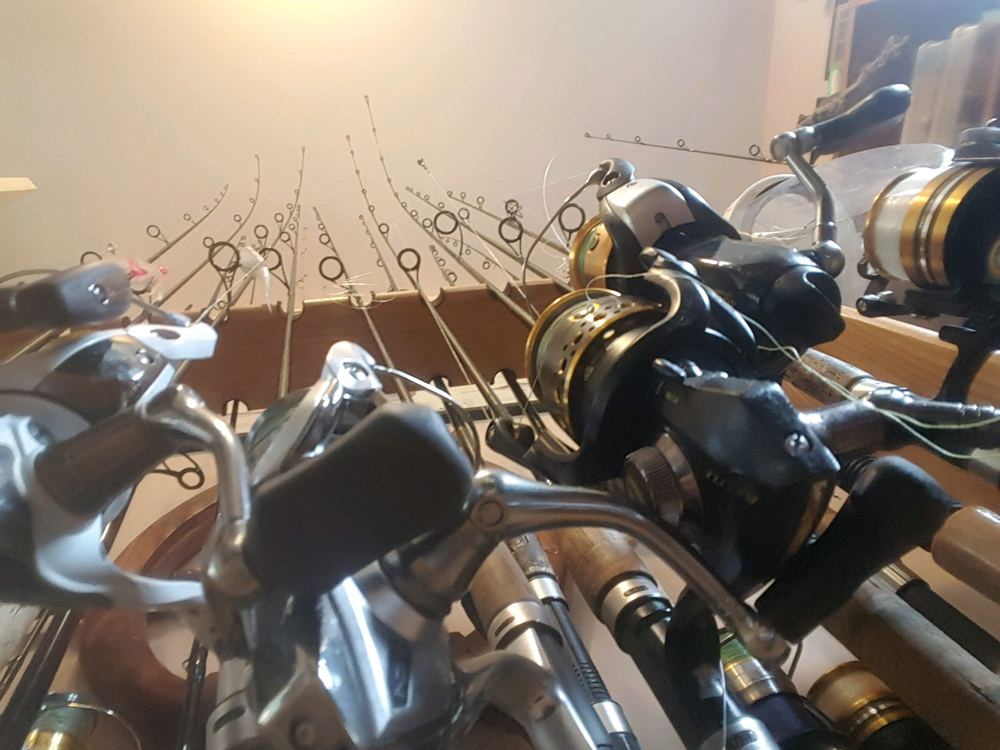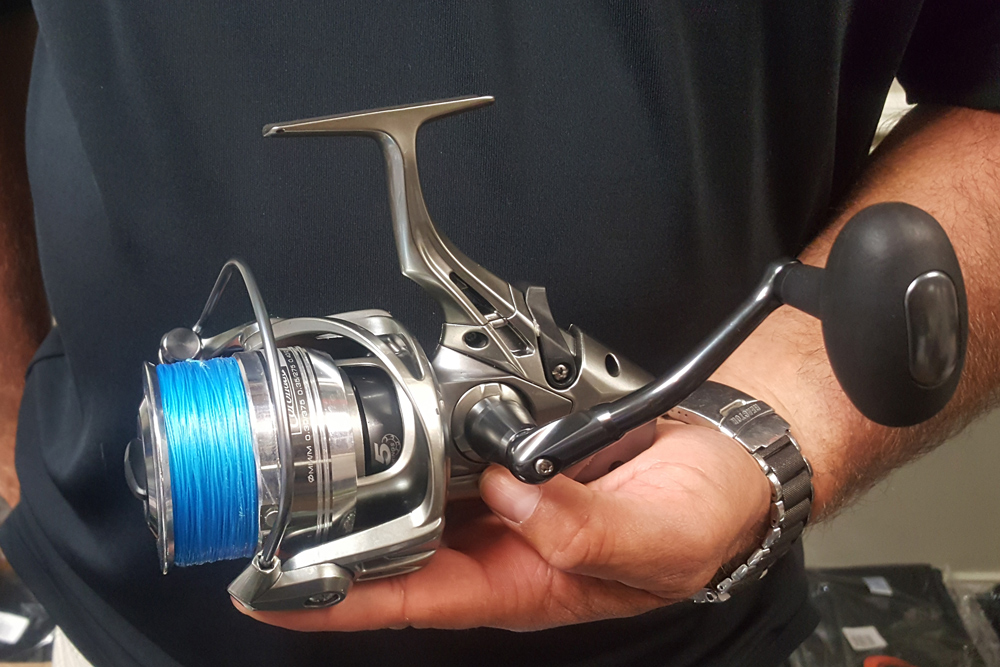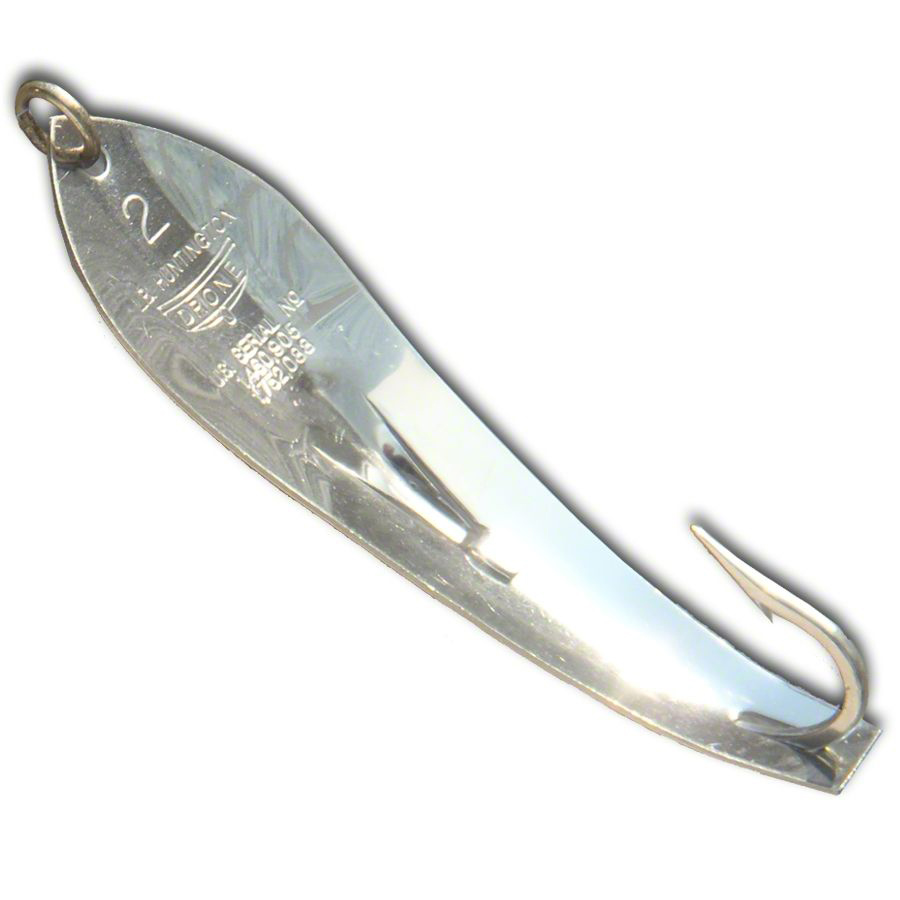The winter winds are howling, snow is piling up in drifts, sub-zero temperatures have made it almost impossible to fish. Almost. Naturally, you would be out there anyway. But something has forced you to stay at home. Valid excuses for failing to fish might include things like a broken leg, a snow plow having shoved your truck into a ditch, or the weather service declaring a national emergency and closing all the roads. In any case, now that you’re stuck in the house you need something to keep yourself occupied. And when fishing isn’t an option, few things are as much fun as playing with your fishing gear. So this seems like an opportune time for some winter tackle maintenance.

That’s a good plan, but many anglers actually end up doing more harm than good when they start taking apart their tackle and reconditioning their reels. So when you do your fishing tackle maintenance this winter, make sure you don’t…
- Spray any type of corrosion inhibitor or lubrication on the exterior of your reels, then put them back without first giving them a serious wipe-down. While we applaud the notion of spritzing reels with CorrosionX, Boeshield T-9, or a similar corrosion-inhibitor, afterwards it’s imperative that you wipe the greasy coating completely away. Otherwise, the stuff becomes a magnet for dust and dirt. By the time spring rolls around, your reels will have a sticky, gooey, dust-covered patina that you’ll have to remove. Worse, it’s likely some of the dust and grime will work its way into your reel’s moving parts, and gum up the works.
- Attempt to respool reels with monofilament, while working single-handed and without a spooling station. Working with someone else, you can at least get some assistance in regulating tension and making sure the line comes off the bulk spool evenly. And if you have a spooling station at home, so much the better. But reeling on line after sliding a pencil through the middle of the spool then wedging it into a couch cushion, or dropping the entire spool into a big bucket or box, is a recipe for disaster. There’s an excellent chance you’ll wind the line on against its grain (and it’ll spring off the spool with glee, come spring-time), and there’s an even better chance the tension will be uneven and as a result, line will cut into the spool when you get a big fish on the line.
- Coil and neatly stow your leaders. This sounds a like a great idea, right? Who wouldn’t want all their leaders tightly coiled up and well-organized? Savvy anglers, that’s who. Because those coiled leaders will be springing with memory, come spring. Rather than stowing them in this way, affix a foam pool noodle to the wall of a closet, or another dark area of the house. Then un-coil the leaders and stick the hooks into the noodle. Let the leaders dangle, and over time they’ll straighten out. Yes, in the spring you’ll want to re-coil them and stow them properly for use on the boat, but the less time they spend coiled up, the less memory they’ll have when you go to use them next season. Note: remember to make sure you hang them in an area when sunlight can’t get to ‘em, because sunlight degrades and weakens monofilament
- Wash, clean, and lube your reels, then leave them with the drags tightened up. While it’s true that you should tighten up the drag before washing a reel (to help prevent water intrusion), it’s every bit as important that you loosen the drag back up before sitting the reel aside for long-term storage. Over time when left down, the drag washers can be come pinched and deformed. Once that happens, the drag won’t be as smooth – and you’ll forever wish you had avoided this winter tackle maintenance mishap. And remember that this goes for all kinds of reels, be they spinners or star drags or lever drags.
- Get your rods rigged and ready, and leave them in the holders with the hooks or swivel clips in an eye or the hook-keeper and tension on the line. This one’s a double-whammy. First off, remember that monofilament stretches. Any mono or leader that sits under tension for months on end will become thoroughly pre-stretched, and as a result, will break more easily when placed under tension. Secondly, while most rods will spring back to shape pretty well, some will eventually become bent if kept under tension for too long. Why risk having a single one ruined? Simply stow your rods without any tension on the line, and you’ll be a lot happier in the long run.
BONUS DISASTER: You want to really ruin your first fishing trip of next season? Just stow all your rods and reels that are spooled with monofilament in an area that gets hit by direct sunlight. That 20 pound test will be down to 10 pound test by the time the spring season cranks up, because UV rays are quite efficient at degrading monofilament. Instead, make sure you stow those rods and reels in a dark closet or garage where the sun don’t shine.

Additional GULP MEGA tackle Disasters to avoid:
- Leaving a GULP lure on a jig head long enough that it dries out. (It will become hard as a rock and will not go anywhere).
- Putting GULP juice into the trays of a tacklebox. (It will end up everywhere).
- Letting your cat lick up GULP juice. (It will end up everywhere… in a post-digested form).
5 Top Winter Tackle Tips
- Cut the first 10 feet of line off every reel you own; this is the section of line that gets the most wear and tear, and should be regularly discarded.
- Pull out your gold and silver spoons and shine them with metal polish. This sounds obvious, but when’s the last time you did it? Huh?
- Put a cedar block or some silicon packets into your tacklebox. They’ll absorb moisture, and help keep corrosion at bay.
- After sharpening hooks, paint the tips with a Sharpie pen. It’ll seal out moisture, and help keep corrosion at bay.
- If you have multiple reels spooled with braid that’s a few years old, strip one, the crank the line from one onto another. That will bury the line that was at the top of the spool – which sees the most wear and potentially has nicks and frays— and expose the line that was at the bottom, which has likely never seen the light of day.

Want to see more in-depth information on proper winter tackle maintenance? Check out Winter Fishing Gear Maintenance.